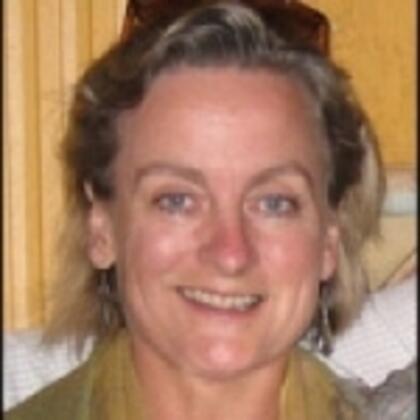Blindness in Children: The Global Perspective
Share
- Details
- Text
- Audio
- Downloads
- Extra Reading
It is not only a personal tragedy to be born or to acquire blindness in early life but also a major socio-economic problem. Tragically many cases are preventable. Professor Gilbert will explain why children become blind and how programs instigated worldwide treatment and prevent blindness.
Download Text
Blindness in Children: The Global Perspective
Professor Clare Gilbert
12 January 2011
Good evening, everyone. It gives me enormous pleasure to be here, and I would like to thank the organisers very much for the invitation.
As has been said, one of my research interests is blindness in children, but at the International Centre for Eye Health, we also do other research.
First of all, I will tell you a little bit about the organisation where I work, so you have a feeling for the context and the contacts that we have. I will then tell you a little bit about some of the challenges of doing research in developing countries and highlight some of the extra challenges of doing research into blindness in children. I will then tell you what we know about blindness in children – how many children are affected and what the causes are; and then I shall finish off by telling you about two bits of research that I have been involved with, working with colleagues in and from Brazil and Bangladesh, and two diseases in particular – one is retinopathy of prematurity and the other is cataract in children in Bangladesh. So you may be a little bit surprised because I expect you have all heard that cataract can affect adults and is a very important cause of vision impairment and blindness in developing countries, but it also affects children.
The International Centre for Eye Health is 30 years old this year and we are based at the London School of Hygiene & Tretinopathy of prematurityical Medicine, where we moved just eight years ago. I must say, we are very happy in our new home because we are surrounded by people who are like-minded and have a public health approach to the control of diseases.
Our mission is research and education to improve eye health and eliminate avoidable visual impairment and blindness, with a focus on low income populations. We have been a WHO Collaborating Centre since we were established, and the International Centre for Eye Health is our WHO Collaborating Centre name. To fulfil our mission we have these three main areas of activity: firstly, research; secondly, education; and thirdly, making sure that we disseminate the findings from our research to people who need to know it.
The different types of research that we are involved with are, broadly, the different types of research that you need to get the evidence to address diseases and their control in populations. Thus we do: epidemiological research; operational research, which is when you know what to do but you are not quite sure of the most effective and the cost-effective way of delivering an intervention; health systems research, which is seeing how a health system can work to be more equitable and more effective; health economics is to do with the costing and working out the most cost-effective way of delivering an intervention; and qualitative research is a bit different – this is finding out about perceptions and understanding and knowledge, so that you can tailor health education programmes for people, starting at the point of what they already know and do. So we try and do all these different elements of research, so that we have a broad overview and a broad range of evidence and tools at our command that we can bring to the control of eye diseases.
This is a map of where in the world we are currently doing research or where we have done research. Much is in Latin America, which is where I have done quite a few studies with colleagues.
In terms of education, we run a Masters in Community Eye Health, and we also have a Diploma, and this map shows you where our students have come from. Most of them come from developing countries, mainly in Africa and in Asia.
Also under our heading of education, we produce a journal of community eye health, and this goes out free of charge four times a year - we now have over 35,000 people on our readership database. We distribute in English, Chinese, Portuguese, Spanish and French. We produce the English version in London, working often with past students, and we have a circulation of 20,000, and then this edition is translated into these different languages for distribution to francophone African countries and to the lusophone African countries, which are the ones that are really the most deprived of educational materials. This shows you the map of the distribution of where our readers are located. Most of them are eye doctors or eye nurses. Some are managers, and others are other healthcare professionals.
As a group, we have very close collaboration not only with other groups within the London School but also external to the School. As Frank has already mentioned, I am a Clinical Consultant to Sightsavers, which is the UK organisation that supports prevention of blindness activities, mainly in Asia and in Africa, but three other members of staff are also closely affiliated with other international NGOs, and this keeps us rooted in reality, because we go and visit their programmes, we give advice, we visit the hospitals that they work in, we meet patients, and we see the communities that they are working in. This contact and close working with these organisations helps us to respond to the needs for evidence and the needs for education, so that we can very much respond to the needs on the ground.
As I have already mentioned, we are a WHO Collaborating Centre, so we work closely with WHO and try and fulfil the evidence of gaps that they have identified. We also work with the International Agency for the Prevention of Blindness, which is an umbrella organisation of all the NGOs and all the professional bodies involved in blindness prevention, and the corporates who support eye care. All these different organisations contribute to our education and research agenda, and also provide a mechanism for dissemination of our results. So we have synergies between the different areas that we work in, as well as having quite a broad scope of different stakeholders and partners.
Epidemiological research answers the following questions. It asks how many people in a population in which we are interested have the disease in which we are interested. There are two different measures: one is prevalence, which is a measure of the pretinopathy of prematurityortion of people in the population who are affected at a given point in time; and the other measure is incidence, which is the rate in the population at which people develop the disease that you are interested in. These are two quite different measures, and they are both useful for different purposes.
Epidemiological research also helps us find out which groups of people are most affected – by age group, gender, occupation, and by location. There are two reasons for needing this information. Firstly, we need to know who to target for services; and secondly, it can be quite useful for generating hypotheses about what might be causing a condition, if only a certain subset of the population are affected.
Another range of study designs address the question “Why do people have the condition?” and then there is another huge body of research that is done to investigate what can be done to prevent or to treat the condition. Here, the gold standard is randomised; we use double blind clinical trials.
So I will move on now to talk a little bit about epidemiology of blindness in children, and this is Dr Fatima Kiari who is currently doing a PhD with me in Nigeria. She is examining one of the children who were participants in the national survey of blindness and visual impairment that we recently completed in Nigeria. She is a past graduate, so this shows you how our past students can also take part in research.
First of all, I want to talk about some of the challenges of doing epidemiological research, or any kind of research, in developing countries. Much of the data that we have about disease frequency, which people are affected and what treatments they are receiving comes through routinely collected data through our information systems within the National Health Service. Unfortunately, outside the industrialised world, health systems are weak and systems for collecting routine data are not in place. This means that there is a whole potential source of data for research that is not available to us. This means that we have to go to the population to find the data that we need, which makes data collection more complex and more expensive.
In the UK, we only have one service provider, the National Health Service, but in many other countries, particularly in Latin America, there is a plethora of different service providers, who all have different ways of doing things. Here again, this adds to the complexity of trying to collect data in a standardised manner. In much of Africa and the developing world, subspecialty ophthalmology is not in place and people are trained as general ophthalmologists, so if we want to do research into blindness in children, for example, there are very few, or there have been very few, ophthalmologists who have the relevant skills and expertise to be able to examine children and give a confident diagnosis.
Given the huge need for delivery of services, there is often not a research culture, and there are a lack of research institutions and people who have been trained, though this is something that the World Health Organisation is trying to address at the moment. We are hoping that our MSc students can also contribute to this building of capacity for research. Then, one also has to consider that we who are interested in eyes and blindness are in competition with other funding agencies and other researchers, who may be more interested in diseases which cause people to die, such as HIV, AIDS and TB.
So the challenges are considerable, and when we come to talk about blindness in children, there are some other things that make life a bit difficult, and this is because children do not complain. In fact, a child can be almost completely blind and not complain that they cannot see, and this is because they do not know any different and they do not know that other children can see differently from them. This means that you have to be more proactive and also take notice of what parents might say and what they have observed about a child’s behaviour. Children do not like to be examined, although I must say, in my experience, examining children in developing countries is a far sight easier than examining children in the UK. Communication is difficult, so if you are trying to ask them to measure their vision, trying to get them to understand what you are asking them to do is also difficult, and this means that standard methods cannot be used. Blindness is relatively rare, and this means that we have to have large studies. So, this may all sound like an excuse, but it is an important backdretinopathy of prematurity so you understand the difficulties in obtaining some of this information.
This means that we have to be creative and take opportunities as they arise. This may mean that we put blindness in children, or blindness, into studies that are being done for other purposes. In a moment I shall tell you about the key informant method, which is a novel method that was refined and developed by one of my PhD students in Bangladesh. This is proving a very useful approach to the study of unusual diseases in populations.
In terms of information on the causes of blindness in children, much of the early work was done by examining children who were involved in schools for the blind. This is a photograph of me measuring the vision of children in a school in Uganda. You can also examine children who are identified through community-based rehabilitation programmes, and again, the key informant method can be very useful in providing information on the causes of blindness in children.
So, whenever we do epidemiology, we have to start off with definitions, so that you know exactly what it is that you are trying to measure in the population and these are the definitions that are used for the epidemiology of blindness in children. So, we are using the definition of childhood of 0 to 15 years, and blindness is defined as less than 3/60 in the better eye.
Now, you will all be familiar with these visual acuity or vision testing charts. The one that we normally see in the UK is the one with the letters, here, but for measuring acuity in populations who are not literate, we have to use other symbols or letters. So, for the Cs, you ask the person to identify where the opening is in the C; or the Es, you ask them to point in the direction that the Es are pointing, as the different letters are indicated. It is usual to test the vision at 6 metres, but blindness is defined as 3/60, which means that the person cannot see the big letter in their better eye when they are tested at 3 metres, so this represents a profound level of visual loss.
When we think about measuring vision in children, we can only use the letter chart on children over the age of 10 who go to school. It is only about that age that they know their letters. For the C and the Es, children can only get their hands to coordinate pretinopathy of prematurityerly if they are 5 years and above, so this means that we are stuck for measuring vision in children who are less than 5 years of age. Therefore, we have to use other testing methods, some with symbols and matching tests and some with paddles with stripes on. I do not have time to explain exactly how they work, but there are different methods that we need to use for children, and we also sometimes have to use toys which means having a very messy clinic and not being frightened to make a complete idiot of oneself as well. In this picture, the ophthalmologist is seeing how this child is responding to the face of the child as he moves it about above his face. If the child can see, then she will fix and follow the face of the toy.
So what do we know about the epidemiology of blindness in children? This graph here shows all the available data that has been published since 1990. This shows 20 years of different studies, where we have been able to extract information on the prevalence of blindness in children. Just recall that the prevalence is the pretinopathy of prematurityortion of people in the population who are affected, and because blindness in children is quite rare, we measure the prevalence per 1,000 children rather than as a percentage. Each of these spots represents data from a different study, and the data have been plotted against under-5 mortality rates, which are also per 1,000 children. With the eye of faith, one could see that, in countries that have very low under-5 mortality rates – the spots on the left – the prevalence of blindness is also low. In countries which have higher under-5 mortality rates, the prevalence of blindness is higher. We are now using under-5 mortality rates as a proxy for blindness in children.
So, for all the countries that do not have data, we can use their under-5 mortality rate to estimate what the prevalence of blindness in children might be. We do this because blindness in children and child mortality have very similar determinants: they are both related to poverty; having uneducated mothers; poor nutrition; poor infrastructure; poor health services; and poor access to specific interventions that not only prevent mortality but which also prevent blindness. The two important diseases of childhood which not only cause children to die but which also cause them to become blind, are measles and vitamin A deficiency. Over the last 15 years, there have been enormous programmes to control these two conditions, through the WHO, with support from the major UN agencies, and most countries of the world now have reached their target of having at least 80% of children under the age of 5 immunised against measles. Fortunately, vitamin A can be given at the same time as the measles immunisation, which means that they can get two major lifesaving interventions at the same time. This is also having the impact of reducing corneal scarring in children from vitamin A deficiency or measles, which is why the little girl in the picture is blind. She has white scarring of the cornea - the cornea is the front of the eye. Since the early-1990s, under-5 mortality rates have also been used as a proxy indicator to determine whether vitamin A deficiency is a public health problem, so we feel that there are other groups who are now also realising the value and importance of using under-5 mortality rates.
This is a graph in 1999 to show the estimated prevalence of blindness in children in different countries in the world. The green countries are those with a very low prevalence, around 0.3-0.4 per 1,000. As one might anticipate, Africa is the region with the highest under-5 mortality rates, and so the highest estimated blindness prevalence in children. As we probably all know, under-5 mortality rates have been dretinopathy of prematurityping, more rapidly in some regions of the world than in others. If you look at the distribution in 1960, on the left, you see that they are quite widely distributed, but if you now look in 2005, on the right, Sub-Saharan Africa is trailing behind, and the rate of fall in under-5 mortality rate in Sub-Saharan Africa is not the same as in other regions. This is reflected in this map here. If we are using under-5 mortality rates to indicate the likely prevalence of blindness, we see that much of the world that was orange and yellow has now become green, but countries in Africa are still likely to have a high under-5 mortality rate. I shall come back to this in a moment when I talk about Bangladesh.
So we have these proxy estimates, from 1999 and 2010, to estimate the number of children in the world who are blind. In 1999, we estimated it was 1.4 million, and there will be a 10% reduction until the year 2020. All regions of the world we reckon have had a decline in the number of children who are blind, apart from Sub-Saharan Africa, which are the columns on the right, and this reflects not only stagnation of the decline in under-5 mortality rates, but also, the fact that it is the only region in the world where the number of children is continuing to grow.
I must point out that these regions are using the World Bank designation with the Former Socialist Economies and the Established Market Economies on the left being the most affluent. They are followed by Latin America and the Caribbean, the Middle East crescent, OAI - Other Asia and Islands such as Philippines, Indonesia, Bangladesh - and then finally Sub-Saharan Africa on the right.
I shall move on now to think about the causes of blindness in children. We worked with the WHO to develop a new way of classifying the causes of blindness in children in 1993. This was adopted by the World Health Organisation, and now, nearly all the studies that are published use this system, which is great because it means that the data can be compared between the different studies. We use two different ways of classifying the causes: one is a simple descriptive way, which just describes where in the eye or the visual pathways the major problem lies; and the second uses the time of onset of the condition that led to blindness. It is useful to have both because, when you examine a child, you can always say where in the visual pathway the pathology lies, but you cannot always say what the underlying cause was.
Here is a little bit of anatomy. This shows the parts of the eye: the cornea, which is the transparent clear front window of the eye; the lens of the eye, which is normally transparent and completely clear – it is when the lens becomes opaque that you develop a cataract; and the retina which is the thin neurological tissue that lines the back of the eye and which converts the light energy into the electrical impulse, which goes up the optic nerve to the visual cortex in the brain.
The second classification - the time of onset - uses a life course approach, which had been developed by paediatricians. They talk about these different time periods at which you may need to intervene to control diseases in children. Exactly the same applies for blindness in children, because, during adolescence, we may want to detect mothers and their husbands who have genetic disease; during pregnancy, there are infections that can go across the placenta and damage the developing baby; and there are also genes that are responsible for controlling how the eye develops and grows; if there is obstructed labour, then this can cause brain damage, which can give rise to damage to the brain and visual loss in that way; newborn babies can develop conjunctivitis of the newborn, which is when the baby contracts infection from the birth canal and if the mother has got gonococcal infection, then the baby can acquire gonococcal infection in the eye, which can be absolutely devastating and blinding; and if the baby is born premature, then they can develop retinopathy of prematurity; and the child can be born completely healthy but develop a disease or a condition of childhood which can cause them to become blind and, in developing countries, certainly measles and vitamin A deficiency have been the most important, as have the use of traditional eye medicines.
So, blindness in children is complex. There are lots of different causes and there are a range of interventions and strategies that are needed for control. These can extend from the community, for prevention, right through to the need for very sophisticated surgical services at the tertiary level of delivery.
So, what do we know about the causes of blindness in children? We now have data on over 32,000 children from 43 countries. I did not examine them all! There are now many colleagues who have been using the WHO method to record the data. This has shown a marked variation in the major causes of blindness in children. This little crocodile of children I saw at a school in Thailand, where a lot of these little children were blind from retinopathy of prematurity. I just want to point out that children who are congenitally blind do not know that there is a world out there, so they walk around with their head down, because it does not actually make any difference if they have their head down or their head up. This is one of the things that early rehabilitation of children emphasises, is to try and make sure they have a normal posture and a normal affect, so that they do not appear quite so different to their sighted peers.
In affluent countries, if we were to take a population of 10 million, around 20% of that population would be children, so that is about 2 million children in a population of 10 million. If we use that under-5 mortality rate to estimate the prevalence, then around 0.3 in every 1,000 or 3 in every 10,000 children will be blind. So if you multiply the 0.3 per thousand by the 2 million, we come up with a figure of 600 blind children in a population of 10 million – e.g. London. We know, from the data that we have collected, that most of the children in industrialised countries are blind from disorders of the retina, the lens and the brain, and here, this would come under “others”.
In middle-income countries, the demographic distribution is a bit different. Then, around 30% of the children will be children. The under-5 mortality rates are going to be a bit higher, maybe 0.6 per 1,000, and so, instead of 600 blind children in a population of 10 million, there will be 1,800. In middle-income countries, this is where retinopathy of prematurity is now becoming an important cause of avoidable blindness in children.
In poor counties, there may be 3,600 blind children, and in these countries, measles immunisation may not be complete, vitamin A deficiency may still be a problem, and so around 20% of children are still blind from scarring of the cornea, as shown in the photograph on the right; glaucoma, which can also affect children; and cataract which is not adequately managed, either because children are not found or because they have the operations very late and their sight cannot be saved.
In the very poor countries, mainly in Africa, where the prevalence of blindness can be 1.2 per 1,000 or even higher, there may be 10 times as many blind children in a 10 million population as in industrialised countries. Here, corneal blindness, or the causes of corneal blindness are not being controlled, and up to half of children can be blind from conditions which cause scarring of the cornea.
The photograph on the right is unfortunately of a little girl who I saw when I was in Sierra Leone, and she had had very simple viral form of conjunctivitis which would have got better on its own without any treatment. However, she used a local remedy. She used urine from her uncle who had gonorrhoea so it was infected with gonococcus and as a result, this little girl was blinded. You find people use traditional remedies as a last resort, and it usually means that there are no eye care providers and services available.
If we put all this information together, the number of blind children per 10 million population, by cause and level of development, we come up with this schema. It shows that in high income countries, a relatively high pretinopathy of prematurityortion of children are blind from conditions that you cannot do anything about, so in a population of 10 million, if you remember, there may be 600 who are blind, but most of them will be blind from conditions that you cannot do very much about. Whereas, in very low income countries, we have more preventable causes which we can do something about, and this schema is proving very useful for countries to come up with a rough estimate of not only the number of children who are blind are in their population, but also the likely major causes.
If we think about the avoidable causes, these are the ones that are highlighted in yellow, blue and green. The preventable ones are the corneal diseases, the treatable diseases are cataract and glaucoma, and the retinopathy of prematurity is both preventable and treatable. So, overall, over 40% of children in the world are needlessly blind, and most of the children who have avoidable blindness live in Africa and in Asia.
As has already been mentioned, blindness can have a major impact, not only on the child, but also on their family and on their community. I have alluded to the fact that children who are born blind have great difficulty in learning how to behave in a way that is normal. Also, blindness can have profound effects on their development, not only their physical development, but also their social and emotional development. This is because it is said that 75% of what we learn when we are small babies come through vision, and I think all of us are very aware that, when we meet babies, they watch and follow what is going on and they copy and they respond to their visual environment. So, if a child is blind, then that opportunity for learning is cut off from them. This is why it is very important to try and identify children who are blind early, to give them the treatment they need, not only to restore their sight, but also to try and overcome this developmental delay.
Provision for schooling for children who are blind is woefully inadequate throughout the world, but particularly in developing countries, where approximately only 10% of children who are blind receive any kind of education. This will have a lifelong impact on their career opportunities also.
Having a disabled child in a family can cause enormous pressure and strain and can lead to strained relationships and even family breakdown. There is also a substantial economic cost not only because the child will not be able to go on and earn an income, but because there is the loss of the earnings of a parent who has to give up their time to care for a child. So, the consequences of disability and blindness are enormous and they extend well beyond the individual child.
So, what is being done about it? I am pleased to say that, in 1999, the World Health Organisation and the International Agency for the Prevention of Blindness launched a global initiative for the elimination of avoidable blindness by the year 2020, and blindness in children is one of the five priorities for control. This is a document that outlines the different strategies that countries can use.
I want to talk now about how research has strengthened programmes and influenced policy within this Vision2020 initiative, and I will talk about retinopathy of prematurity in Brazil and Latin America, and cataract in Bangladesh.
These are two very well-known people who are blind from retinopathy of prematurity: Stevie Wonder and David Blunkett. This was a condition which was thought to have been a disaster of the past, because it was associated with giving premature babies too much oxygen. As soon as people realised that, they stopped giving oxygen to babies and people thought that this was the end of that as a blinding eye disease. Basically, retinopathy of prematurity only affects premature babies, and it has clearly defined stages, which, if not treated in time, can give rise to retinal detachment, which is impossible to treat. So the key to retinopathy of prematurity is prevention and detecting it in time to treat it.
When I was examining children in Chile, I found, to my great surprise, and also to the surprise of the ophthalmologists who were working with me, that nearly 20% of children who were examined were blind from retinopathy of prematurity. No one had any idea that this was the case. This led on to other studies in other countries in Latin America and around the world, and we estimate that, in Latin America, there are 25,000 children who are blind from retinopathy of prematurity, and a further 30,000 who are blind in Eastern Euretinopathy of prematuritye and Asian cities.
The primary risk factor for retinopathy of prematurity is prematurity. The more premature the baby, the more likely it is to suffer from this condition. However, oxygen still plays a role, and inadequately controlled oxygen is a risk factor, as are infection, failure to gain weight and inadequate services, including nurses who do not know what they can do to prevent the disease. Prevention can come through these different strategies here, but the two I want to highlight are excellent neonatal care and the role of eye doctors in examining babies and treating those who have got the advanced stages of the disease.
This experience in Latin America made me ask the question of which babies should be examined for the disease, so I asked my colleagues to provide me data for the characteristics of the birth weight and gestational age of the babies that they treated. This is data from Canada, US and UK, and this is what a full-term baby would be, at 40 weeks. These babies are all extremely premature, so only extremely premature babies are developing this severe form of the disease in industrialised countries. Our UK screening criteria are based upon that, so the ophthalmologists only examine babies who are less than 1,500 grams and equal to or less than 32 weeks gestational age. However, this is data provided by colleagues from all these different countries, and we see a much wider range of birth weights and gestational ages in the babies who are developing this severe form of the disease.
This is happening because there are wildly varying levels of care for babies in middle-income countries, and this is exemplified in India. This is a very sophisticated unit in India, where the babies have all the kind of care that you would expect in an industrialised country. However, most of the babies who are cared for in the government sector are cared for in these type of units, where the care is woefully inadequate.
The implication of the study was that if we were to use the UK criteria to other countries, we would miss a lot of babies needing treatment and they would go blind; retinopathy of prematurity can be prevented with today’s knowledge with all those bigger babies.
This led me to do some research in Rio, an absolutely beautiful city. We did two projects: one was to address which criteria should be used for examination; and the other was to assess whether we could prevent retinopathy of prematurity. I did some work with Andrea Zin, who is an ophthalmologist, who examined 4,000 babies in the seven largest units in Rio de Janeiro. This is a pen here, and this is a footprint of a baby, thus showing how tiny some of these babies are that are examined for this disease. The findings, in a nutshell, showed that, in the units which had got the better levels of care, where the babies were surviving, you saw only smaller babies developing the disease, but in the units where the care was not so good and the survival rates were lower, you had a wider range of birth weights and gestational age of babies developing severe disease. This means that you need to have different screening criteria, involving the bigger babies, in some units, or the smaller babies in other units.
If you were to apply just one criteria to all units to make it easy, so the ophthalmologist and the neonatologists know what they are doing, this would increase the number of babies to be examined by 20%, but this would only need 12% more examinations, so the workload to find those extra babies is not as great as one might initially think.
The Points of Care study was to address the question: does training nurses and providing equipment help to prevent retinopathy of prematurity and other outcomes of neonatal care? This is a three-year study, with a one year pre-intervention data collection. Then, the nurses were trained and provided with equipment, and then, after one year, we had the follow-up data collection. The points of care is so that the nurses know how to control and reduce all these different factors which can increase the risk of bad outcomes, including retinopathy of prematurity, in pre-term babies.
In November, we went back to do a preliminary analysis of the data, and unfortunately, despite all this work, we found that there was no change in the rate of retinopathy of prematurity in the babies or in other outcomes. This may have been explained by a brain drain of neonatologists and nurses from the units that we were working in because there was a severe shortage of personnel. We were pleased to note that the nurses were actually monitoring the babies better after the training than they were before, but this did not translate into less retinopathy of prematurity.
So, in 1997, Eamonn O’Donahue and I ran the first workshop in Chile. At that time, no one really knew that retinopathy of prematurity was a problem. There were very few ophthalmologists who were screening. Since then, there have been 30 workshops. Most countries now have programmes. There is support for training and equipment from the NGOs, and there are government policies now in several countries, which make examination of pre-term babies an essential requirement. Only when programmes get embedded within ministries of health and government do they increase their coverage and become sustainable. Control of blindness of retinopathy of prematurity is now the second goal of PAHO, which is the WHO for the Latin American region, which also will mean that there will probably be more resources to controlling retinopathy of prematurity in the region.
Things are also happening outside Latin America, with these two international congresses, which I was fortunate enough to be on the scientific committee for. National guidelines have been developed in China, and also, just last month, in India. Eastern Europe poses a big challenge, for reasons I do not need to go into.
This just shows you what this all means in terms of the parents. This little boy was a very precious baby. His parents had been infertile for many years and had had lots of miscarriages, and he was identified and treated, and I think you can see by the way he is looking at the camera that he can certainly see after his treatment.
This is Bangladesh, a very different country indeed. It is the most densely populated country in the world. It has 50 million people. I shall briefly tell you about some work done by Dr Muhit, who was another of my PhD students. The questions we asked in this study were: how many children are blind; why are they blind; and then what can be done about it? He developed and refined this key informant method which he then applied to populations of 100,000 in all 64 districts across the country, so it was a national study. The key informants were community volunteers, who were identified and then trained, in a one-day training session, on the different causes of blindness in children, on what to ask for and what to look for. After that training, they were given two weeks to network in their communities. There were 40 key informants trained for every 100,000 population. So they went back to their communities to identify children who they thought had visual problems. The families then brought their children to a site where a team of ophthalmologists measured the vision in the children, which you can see on the left, and examined them to confirm that they were blind and to identify the cause. The parents also received counselling from one of the fieldworkers, and children who were blind were referred to the local hospital.
He found that among the nearly 2,000 children that he examined, he estimated the prevalence to be 0.75 per 1,000 children, which is almost exactly what you would expect if you used under-5 mortality rate as a proxy, which was very pleasing. The main cause was unoperated cataract, affecting almost a third of the children. Now, because of beliefs amongst the parents that congenital blindness cannot be treated, 85% of those children had never seen an eye doctor. They were just sitting at home and in their village. As a result of this study, we were able to estimate that there are 40,000 children in Bangladesh who are blind – 12,000 of them are bilaterally blind from cataract, which can be treated to restore sight. At that time, there was only one surgeon who was trained in paediatrics and there were only three eye hospitals who could manage children, two of which were in the capital city. They were only doing 300 cataract operations throughout the country a year, which was nowhere near enough to meet the need in the community.
So, a collaborative project was established with Sightsavers. The highly ambitious target was to find 40,000 blind children, to operate on 10,000 and to establish 8-10 child eye care centres. Three methods were used for finding children in the community, including the key informant method, and those other two methods that you can see there.
I was involved in the planning, the monitoring and also the mid-term evaluation and the end-of-project evaluation in 2010. Going back, it was absolutely wonderful to see that there are now 16 trained paediatric ophthalmologists; there are 8 well-established tertiary centres. This project had identified nearly 33,000 blind children – almost 10,000 were bilaterally blind from cataract, and over 24,000 cataract operations had been performed on children over that six year period, which was really staggering. I was really amazed by what they had been able to achieve. This shows some of the children who are in one of the eye units which had been upgraded and refurbished and new equipment and training for children with cataract.
This shows another family where the mother herself was blind, and she had had two blind children, and the father had run away – he could not cope with having a totally blind family. These two children were found living in a slum in Chittagong, and they had had cataract surgery, and I think you can see by their cheeky faces that they could see me very well as I took their photographs.
The key informant method is now being used by our group to investigate other disabilities in children, and this is one of the examination camps that you can see for children who have a whole range of other disabilities.
So, what next? I think we need to do policy research for retinopathy of prematurity in Latin America to see how we can advocate for and to get programmes for retinopathy of prematurity embedded within ministries of health. We need to evaluate the impact of integrating child eye health into government health systems, which is what will make them sustainable in the long run, and we need to scale up what we already know works.
I would like to acknowledge my colleagues and funding agencies, the team of fabulous people with whom I have been working with in Latin America and the team of people with whom I have been working in the UK and at the International Centre for Eye Health.
Thank you.
©Professor Clare Gilbert, Gresham College 2011
Part of:
This event was on Wed, 12 Jan 2011
Support Gresham
Gresham College has offered an outstanding education to the public free of charge for over 400 years. Today, Gresham College plays an important role in fostering a love of learning and a greater understanding of ourselves and the world around us. Your donation will help to widen our reach and to broaden our audience, allowing more people to benefit from a high-quality education from some of the brightest minds.


 Login
Login









